(Source)










(Source)
More Posts from Ocrim1967 and Others




All Cats Are Beautiful




























Ask Ethan: Is Spacetime Really A Fabric?
“I’d like somebody to finally acknowledge and admit that showing balls on a bed sheet doesn’t cut it as a picture of reality.”
Okay, I admit it: visualizing General Relativity as balls on a bedsheet doesn’t make a whole lot of sense. For one, if this is what gravity is supposed to be, what pulls the balls “down” onto the bedsheet? For another, if space is three dimensional, why are we talking about a 2D “fabric” of space? And for another, why do these lines curve away from the mass, rather than towards it?
It’s true: this visualization of General Relativity is highly flawed. But, believe it or not, all visualizations of General Relativity inherently have similar flaws. The reason is that space itself is not an observable thing! In Einstein’s theory, General Relativity provides the link between the matter and energy in the Universe, which determines the geometric curvature of spacetime, and how the rest of the matter and energy in the Universe moves in response to that. In this Universe, we can only measure matter and energy, not space itself. We can visualize it how we like, but all visualizations are inherently flawed.
Come get the story of how to make as much sense as possible out of the Universe we actually have.
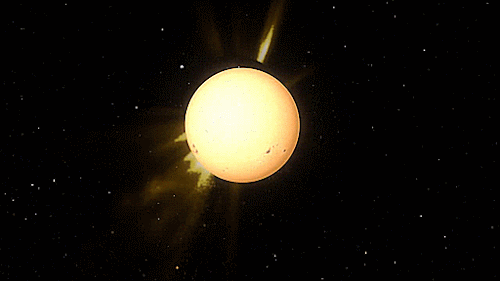


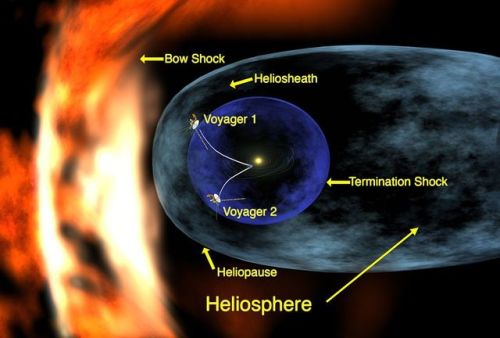
The heliosphere is the bubble-like region of space dominated by the Sun, which extends far beyond the orbit of Pluto. Plasma “blown” out from the Sun, known as the solar wind, creates and maintains this bubble against the outside pressure of the interstellar medium, the hydrogen and helium gas that permeates the Milky Way Galaxy. The solar wind flows outward from the Sun until encountering the termination shock, where motion slows abruptly. The Voyager spacecraft have explored the outer reaches of the heliosphere, passing through the shock and entering the heliosheath, a transitional region which is in turn bounded by the outermost edge of the heliosphere, called the heliopause. The shape of the heliosphere is controlled by the interstellar medium through which it is traveling, as well as the Sun and is not perfectly spherical. The limited data available and unexplored nature of these structures have resulted in many theories. The word “heliosphere” is said to have been coined by Alexander J. Dessler, who is credited with first use of the word in the scientific literature.
On September 12, 2013, NASA announced that Voyager 1 left the heliopause on August 25, 2012, when it measured a sudden increase in plasma density of about forty times. Because the heliopause marks one boundary between the Sun’s solar wind and the rest of the galaxy, a spacecraft such as Voyager 1 which has departed the heliosphere, can be said to have reached interstellar space. source







Asperitas and Mammatus
Well-defined, wave-like structures in the underside of the cloud; more chaotic and with less horizontal organization than the variety undulatus. Asperitas is characterized by localized waves in the cloud base, either smooth or dappled with smaller features, sometimes descending into sharp points, as if viewing a roughened sea surface from below. Varying levels of illumination and thickness of the cloud can lead to dramatic visual effects.
Occurs mostly with Stratocumulus and Altocumulus
Mammatus is a cellular pattern of pouches hanging underneath the base of a cloud, typically cumulonimbus rainclouds, although they may be attached to other classes of parent clouds.
source | source | images: x, x, x, x, x, x, x
When the Moon's Shadow Falls on Earth
On July 2, 2019, a total solar eclipse will pass over parts of Argentina and Chile.

Solar eclipses happen when the Moon passes directly between the Sun and Earth, casting its shadow onto Earth’s surface. Because the Moon’s orbit isn’t perfectly in line with the Sun and Earth, its shadow usually passes above or below Earth. But when it lines up just right, we get a solar eclipse!

People in the inner part of the Moon’s shadow — the umbra — have the chance to witness a total solar eclipse, while those in the outer part of the shadow — the penumbra — experience a partial solar eclipse.

The path of the total solar eclipse stretches across parts of Chile and Argentina. People outside this path may see a partial eclipse or no eclipse at all.
During a total solar eclipse, the Moon blocks out the Sun’s bright face, revealing its comparatively faint outer atmosphere, the corona. The corona is a dynamic region that is thought to hold the answers to questions about the fundamental physics of the Sun — like why the corona is so much hotter than the Sun’s surface and how the Sun’s constant outflow of material, the solar wind, is accelerated to such high speeds.

Image Credit: Miloslav Druckmüller, Peter Aniol, Shadia Habbal
Our Parker Solar Probe and the upcoming Solar Orbiter mission from the European Space Agency are exploring these questions by flying through the corona itself and taking unprecedented measurements of the conditions there. Plus, our newly-chosen PUNCH mission will create tiny, artificial eclipses in front of its cameras — using an instrument called a coronagraph — to study structures in the Sun’s corona and examine how it generates the solar wind.
Watching the eclipse
It’s never safe to look directly at the uneclipsed or partially eclipsed Sun – so you’ll need special solar viewing glasses or an indirect viewing method, like pinhole projection, to watch the eclipse.

For people in the path of totality, there will be a few brief moments when it is safe to look directly at the eclipse. Only once the Moon has completely covered the Sun and there is no sunlight shining is it safe to look at the eclipse. Make sure you put your eclipse glasses back on or return to indirect viewing before the first flash of sunlight appears around the Moon’s edge.
No matter where you are, you can watch the eclipse online! The Exploratorium will be streaming live views of the eclipse with commentary in both English and Spanish starting at 4 p.m. EDT / 1 p.m. PDT on July 2. Watch with us at nasa.gov/live!
Para más información e actualizaciones en español acerca del eclipse, sigue a @NASA_es en Twitter o vea esta hoja de hechos.
Make sure to follow us on Tumblr for your regular dose of space: http://nasa.tumblr.com.
Galactic Ghouls and Stellar Screams
A quiet, starry night sky might not seem like a very spooky spectacle, but space can be a creepy place! Monsters lurk in the shadowy depths of the universe, sometimes hidden in plain sight. Many of them are invisible to our eyes, so we have to use special telescopes to see them. Read on to discover some of these strange cosmic beasts, but beware — sometimes fact is scarier than fiction.
Monster Black Holes ⚫

You know those nightmares where no matter how fast you try to run you never seem to get anywhere? Black holes are a sinister possible version of that dream — especially because they’re real! If you get too close to a black hole, there is no possibility of escape.
Just last year our Fermi Gamma-ray Space Telescope traced an otherworldly ghost particle back to one of these monster black holes, providing additional insight into the many signals we’re picking up from some of the most feared creatures in the cosmic deep.
But it gets worse. Our Hubble Space Telescope revealed that these things are hidden in the hearts of nearly every galaxy in the universe. That means supermassive black holes lurk in the shadows of the night sky in every direction you look!
A Hazy Specter 👻

This fiendish specter lives in the center of the Milky Way, haunting our galaxy’s supermassive black hole. But it’s not as scary as it looks! Our SOFIA observatory captured streamlines tracing a magnetic field that appears to be luring most of the material quietly into orbit around the black hole. In other galaxies, magnetic fields seem to be feeding material into hungry black holes — beware! Magnetic fields might be the answer to why some black holes are starving while others are feasting.
Bats in the Belfry 🦇

The universe has bats in the attic! Hubble spotted the shadow of a giant cosmic bat in the Serpens Nebula. Newborn stars like the one at the center of the bat, called HBC 672, are surrounded by disks of material, which are hard to study directly. The shadows they cast, like the bat, can clue scientists in on things like the disk’s size and density. Our solar system formed from the same type of disk of material, but we can only see the end result of planet building here — we want to learn more about the process!
Jack-o-lantern Sun 🎃

A jack-o-lantern in space?! Our Solar Dynamics Observatory watches the Sun at all times, keeping a close eye on space weather. In October 2014, the observatory captured a chilling image of the Sun with a Halloweenish face!
Skull Comet 💀

On Halloween a few years ago, an eerie-looking object known as 2015 TB145 sped across the night sky. Scientists observing it with our Infrared Telescope Facility determined that it was most likely a dead comet. It’s important to study objects like comets and asteroids because they’re dangerous if they cross Earth’s path — just ask the dinosaurs!
Halloween Treat 🍬

Trick-or-treat! Add a piece of glowing cosmic candy to your Halloween haul, courtesy of Hubble! This image shows the Saturn Nebula, formed from the outer layers ejected by a dying star, destined to be recycled into later generations of stars and planets. Our Sun will experience a similar fate in around five billion years.
Witch’s Broom Nebula 🧹

Massive stars are in for a more fiery fate, as the Witch’s Broom Nebula shows. Hubble’s close-up look reveals wisps of gas — shrapnel leftover from a supernova explosion. Astronomers believe that a couple of supernovae occur each century in galaxies like our own Milky Way.
Zombie Stars 🧟

Supernovae usually herald the death of a star, but on a few occasions astronomers have found “zombie stars” left behind after unusually weak supernovae. Our Nuclear Spectroscopic Telescope Array (NuSTAR) has even spotted a mysterious glow of high-energy X-rays that could be the “howls” of dead stars as they feed on their neighbors.
Intergalactic Ghost Towns 🏚️

The universe is brimming with galaxies, but it’s also speckled with some enormous empty pockets of space, too. These giant ghost towns, called voids, may be some of the largest things in the cosmos, and since the universe is expanding, galaxies are racing even farther away from each other all the time! Be grateful for your place in space — the shadowy patches of the universe are dreadful lonely scenes.
Mysterious Invisible Force 🕵️♀️

Some forces are a lot spookier than floorboards creaking or a door slamming shut unexpectedly when you’re home alone. Dark energy is a mysterious antigravity pressure that our Wide Field Infrared Survey Telescope (WFIRST) is going to help us understand. All we know so far is that it’s present everywhere in the cosmos (even in the room with you as you read this) and it controls the fate of the universe, but WFIRST will study hundreds of millions of galaxies to figure out just what dark energy is up to.
Want to learn some fun ways to celebrate Halloween in (NASA) style? Check out this link!
Make sure to follow us on Tumblr for your regular dose of space: http://nasa.tumblr.com
10 Things: How to Photograph a Meteor Shower
Taking photographs of a meteor shower can be an exercise in patience as meteors streak across the sky quickly and unannounced, but with these tips – and some good fortune – you might be rewarded with a great photo.
These tips are meant for a DSLR or mirrorless camera, but some point-and-shoot cameras with manual controls could be used as well.
1. The Photo Op: Perseids Meteors
The Perseids are dusty remnants of comet 109P/Swift-Tuttle.
Earth passes through the comet’s invisible, multi-billion mile trail of tiny debris each year around August, creating a meteor shower of so-called “shooting stars” as the particles are vaporized in our atmosphere.
Perseid meteors already are streaking across the sky. This year’s shower peaks on a moonless summer night -from 4 pm on the 12th until 4 am on the 13th Eastern Daylight Time.
Read more on the Perseids ›
2. Get away from city lights and find a place with dark skies.

In this 30 second exposure, a meteor streaks across the sky in Spruce Knob, West Virginia, during the 2016 Perseids meteor shower. Credit: NASA/Bill Ingalls
Too much light and it will be hard for your eyes to see fainter meteors, plus your image will get flooded with the glow of light. Turning down the brightness of the camera’s LCD screen will help keep your eyes adjusted to the dark. The peak of the 2018 Perseid meteor shower occurs just after the new moon, meaning a thin crescent will set long before the best viewing hours, leaving hopeful sky watchers with a moonlight-free sky!
3. Use a tripod.

In this ten-second exposure, a meteor streaks across the sky above Washington, DC during the 2015 Perseids meteor shower, Credit: NASA/Joel Kowsky
Meteor photography requires long exposures, and even the steadiest of hands can’t hold a camera still enough for a clear shot. Heavier tripods help reduce shaking caused by wind and footsteps, but even a lightweight tripod will do. You can always place sandbags against the feet of the tripod to add weight and stability. If you don’t have a tripod, you might be able to prop your camera on or up against something around you, but be sure to secure your camera.
4. Use a wide-angle lens.

In this 30 second exposure taken with a circular fish-eye lens, a meteor streaks across the sky during the 2016 Perseids meteor shower as a photographer wipes moisture from the camera lens Friday, August 12, 2016 in Spruce Knob, West Virginia. Credit: NASA/Bill Ingalls
A wide-angle lens will capture more of the sky and give you a greater chance of capturing a meteor in your shot, while a zoom lens captures a smaller area of the sky. The odds of a meteor streaking past that small patch are lower.
5. Use a shutter release cable or the camera’s built-in timer.

Long exposures are not just for meteors. In this shot taken at Joshua Tree National Park, a hiker’s headlamp leaves a trail of light along a twilight path. Credit: National Park Service / Hannah Schwalbe
A tripod does a great job of reducing most of the shaking your camera experiences, but even the act of pressing the shutter button can blur your extended exposure. Using the self-timer gives you several seconds for any shaking from pressing the shutter button to stop before the shutter is released. A shutter release cable (without a self-timer) eliminates the need to touch the camera at all. And if your camera has wifi capabilities, you might be able to activate the shutter from a mobile device.
6. Manually focus your lens.

In this 30 second exposure, a meteor streaks across the sky during the annual Perseids meteor shower Friday, August 12, 2016 in Spruce Knob, West Virginia. Credit: NASA/Bill Ingalls
At night, autofocus will struggle to find something on which to focus. Setting your focus to infinity will get you close, but chances are you’ll have to take some test images and do some fine tuning. With your camera on a tripod, take a test image lasting a few seconds, then use the camera’s screen to review the image. Zoom in to a star to see how sharp your focus is. If the stars look like fuzzy blobs, make tiny adjustments to the focus and take another test image.
Repeat until you are happy with the result.
If your camera has a zoomable electronic viewfinder or live view option, you might be able to zoom to a star and focus without having to take a test image.
7. Aim your camera.

The Perseids appear to radiate from the constellation Perseus, visible in the northern sky soon after sunset this time of year.
Even though we don’t know when or where a single meteor will appear, we do know the general area from which they’ll originate.
Meteor showers get their name based on the point in the sky from which they appear to radiate. In the case of the Perseids, during their peak, they appear to come from the direction of the constellation Perseus in the northern sky.
8. Calculate your exposure time.

In this 20-second exposure, a meteor lights up the sky over the top of a mountain ridge near Park City, Utah. Even though this image was captured during the annual Perseid meteor shower, this “shooting star” is probably not one of the Perseid meteors, which originate from material left behind by Comet Swift-Tuttle. Instead, it’s likely one of the many bits of rock and dust that randomly fall into the atmosphere on any given night. Credit: NASA/Bill Dunford
As Earth rotates, the stars in the sky appear to move, and if your shutter is open long enough, you might capture some of that movement. If you want to avoid apparent star movement, you can follow the 500 Rule. Take 500 and divide it by the length in millimeters of your lens. The resulting number is the length of time in seconds that you can keep your shutter open before seeing star trails. For example, if you’re using a 20 mm lens, 25 seconds (500 divided by 20) is the longest you can set your exposure time before star trails start to show up in your images.
9. Experiment!

In this 30 second exposure photo, hikers find their way to the top of Spruce Knob in West Virginia to view the annual Perseids meteor shower, Friday, August 12, 2016. Credit: NASA/Bill Ingalls
Once you know the maximum exposure time, you can set your shutter priority to that length and let the camera calculate other settings for your first image. Depending on how the image turns out, you can manually adjust aperture (set it to a lower number if the image is too dark) and ISO (set it to a higher number if the image is too dark) to improve your next images. Changing only one setting at a time will give you a better understanding of how those changes affect your image.
10. Enjoy the show.

The crew of the International Space Station captured this Perseid meteor falling to Earth over China in 2011. Credit: NASA
With your camera settings adjusted, capturing that perfect photo is just a matter of time and luck. The highest rate of meteors visible per hour is in the hours after midnight and before dawn. Set up your camera next to a lounge chair or a blanket to witness the wonder of a meteor shower for yourself – and, with any luck, you’ll take home some envy-inducing shots, too!
Make sure to follow us on Tumblr for your regular dose of space: http://nasa.tumblr.com.
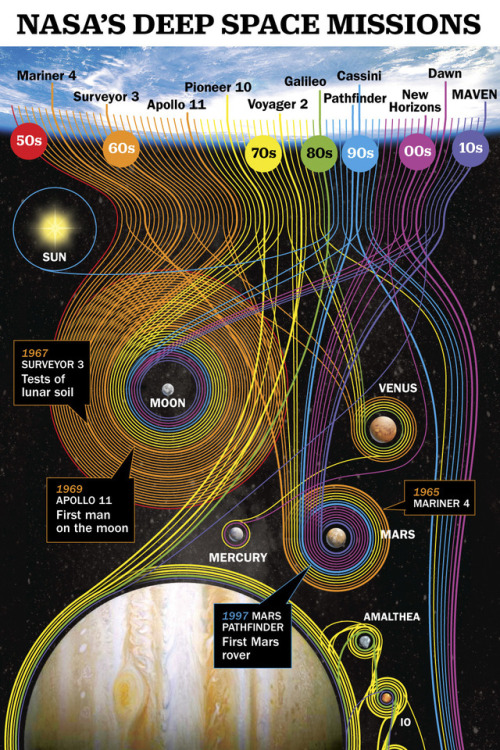
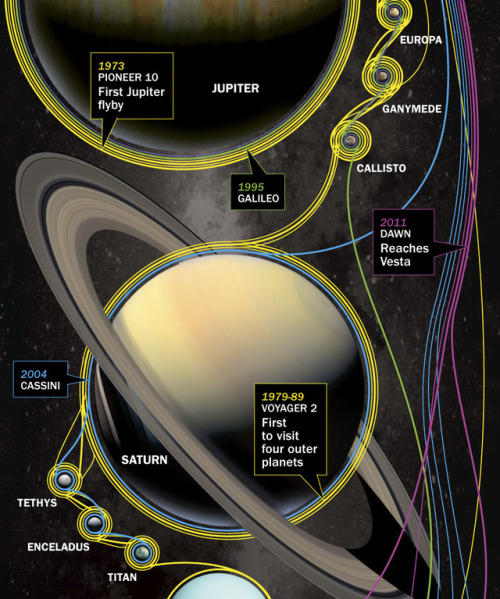
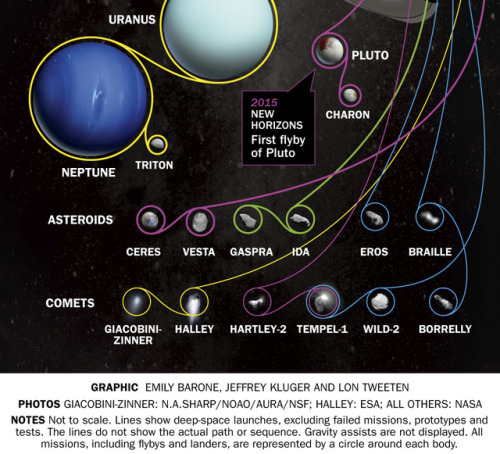
Deep Space Missions




Couple goals
-
 anna15ion liked this · 6 months ago
anna15ion liked this · 6 months ago -
 alpaanaa liked this · 1 year ago
alpaanaa liked this · 1 year ago -
 mamamaip liked this · 1 year ago
mamamaip liked this · 1 year ago -
 scuffedinsignia liked this · 1 year ago
scuffedinsignia liked this · 1 year ago -
 vibrantt reblogged this · 1 year ago
vibrantt reblogged this · 1 year ago -
 mrneedle liked this · 2 years ago
mrneedle liked this · 2 years ago -
 alebrijediscordico reblogged this · 3 years ago
alebrijediscordico reblogged this · 3 years ago -
 iloitse reblogged this · 3 years ago
iloitse reblogged this · 3 years ago -
 10tausend reblogged this · 3 years ago
10tausend reblogged this · 3 years ago -
 lalulutres liked this · 3 years ago
lalulutres liked this · 3 years ago -
 chanyoon93 liked this · 3 years ago
chanyoon93 liked this · 3 years ago -
 viveycious reblogged this · 3 years ago
viveycious reblogged this · 3 years ago -
 l773 liked this · 4 years ago
l773 liked this · 4 years ago -
 stevetoppsculpture liked this · 4 years ago
stevetoppsculpture liked this · 4 years ago -
 xx-li-xx reblogged this · 4 years ago
xx-li-xx reblogged this · 4 years ago -
 bbymorticia liked this · 4 years ago
bbymorticia liked this · 4 years ago -
 laialamartins reblogged this · 4 years ago
laialamartins reblogged this · 4 years ago -
 ceecadda reblogged this · 4 years ago
ceecadda reblogged this · 4 years ago -
 melancholyyy-y reblogged this · 4 years ago
melancholyyy-y reblogged this · 4 years ago